Dear Reader, in this age of AI created content, please support with your goodwill someone who works harder to provide the human-made. Sign up at the top of the lefthand column or bottom of this page. You will receive my hand illustrated monthly newsletter RESTORE NATURE and access to the biodiversity garden design course as I write...and nothing else, I respect your time. I am also removing the advertizing as best I can as its become intrusive inappropriate and pays me nothing.
Grow trees to boost urban biodiversity & regeneration
Oct 30, 2020.
Regenerative gardening activity
11
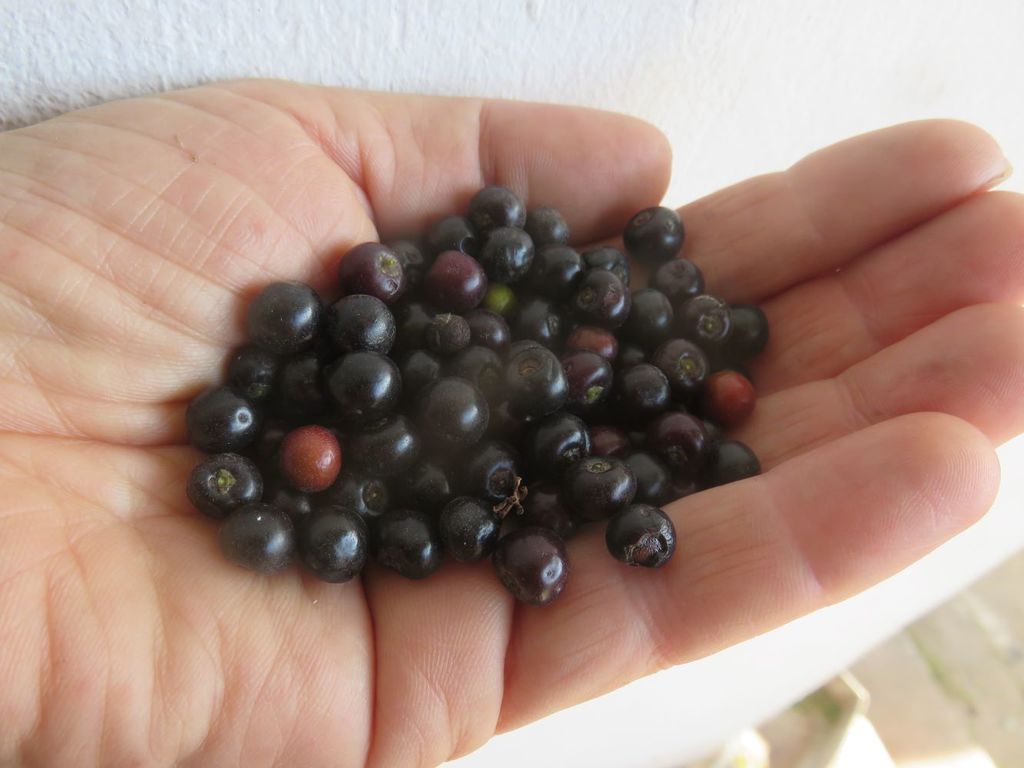 The edible berries of Euclea racemosa
The edible berries of Euclea racemosaTrees regenerate deeper
Generally tree roots reach deeper than other plants, and so the trees will give off sugars in to the soil and boost soil life and regenerate the soil at greater depths. The soil organisms, humus and deep roots will lock carbon down at greater depths where it stays longer. Carbon sequestration by trees is most effective close to source, so the more trees you have close to a polluting source, the more sequestration of the pollutant will occur.
Trees and urban biodiversity
In many areas of cities street trees may be the only plants, possibly they are all the same for entire streets. They are often not native trees, and in our city in new lower income areas there are no street trees at all.
Regeneration requires biodiversity as diverse planting produces diverse soil organisms, and all the beneficial knock on effects of revitalized soil.
Ideally the planting should include all forest story levels, from canopy trees, to understory, shrubs, herbs, ground covers, climbers and underground parts like tubers.
However, if for example, in a parking lot, all that can be
grown are trees, and the trees are diverse, at least that brings
some diversity. Not just the planting will be more diverse. Most insects are host specific and can only feed on specific trees they evolved with, aka natives. So all around the world, some native trees will support greater insect diversity, and that will support greater diversity in animals which feed off the insects, such as birds.
Why grow from seed ?
Seeds are formed after pollination, when the DNA of male and female reproductive cell gets mixed together, and this creates genetic diversity and vigor in the plant. Many municipal trees are mass produced in special nurseries and tend to be found everywhere around the city. So if you use your own selected seed you can add difference and diversity. They may also be mass produced from cuttings, as clones, with very reduced genetic variation.
From the point of view of the hobby grower, tree seed can be picked up with no damage to the plant and is easier to collect when you see some, requiring just a plastic bag and some ability to withstand stares. Cloning needs more preparation and equipment. In addition seeds can keep better, till the busy urbanite has time to sow them.
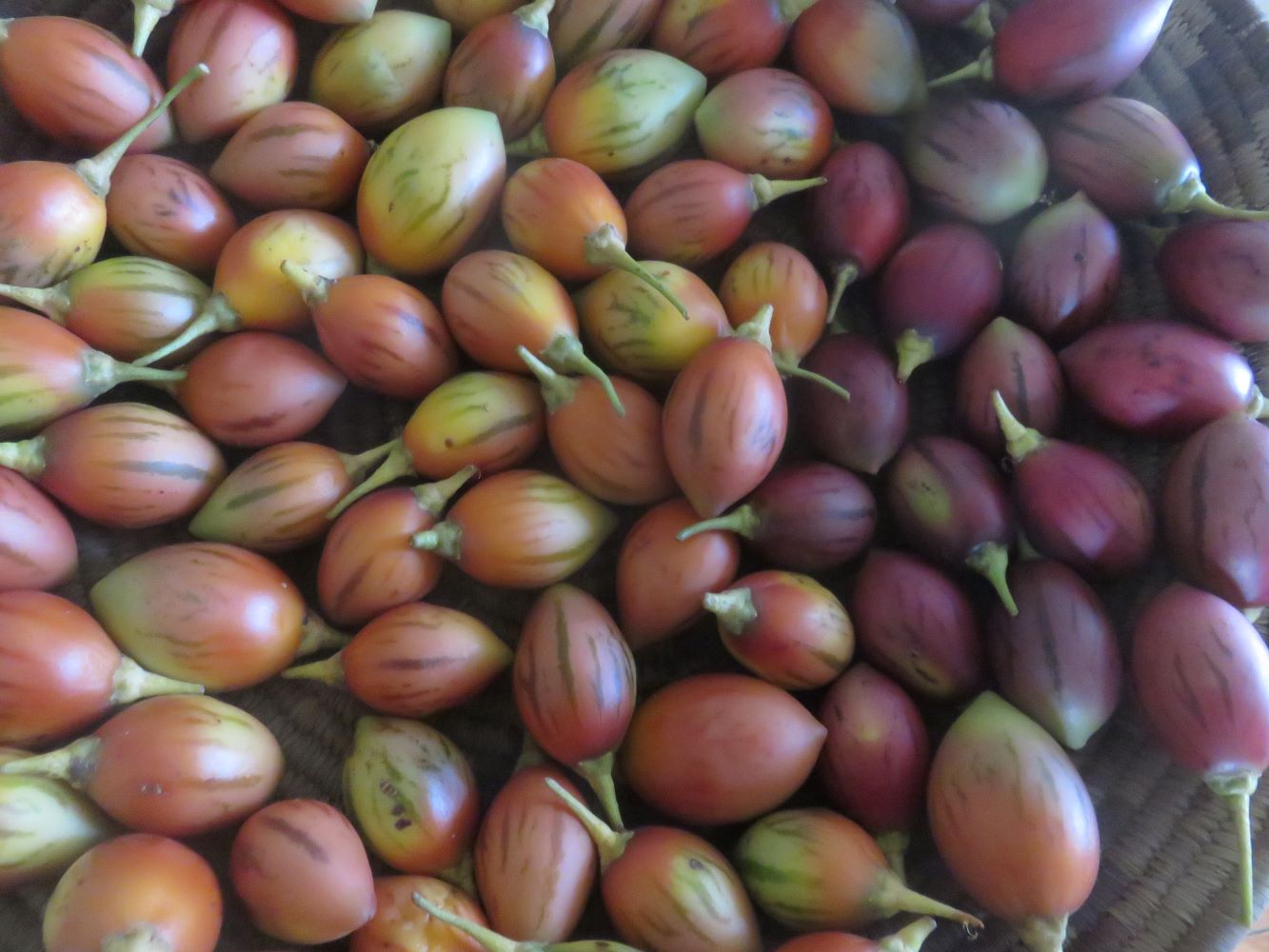 Tamarillo diversity seen at harvest: the seed from one fruit produced trees with fruit different in color, flavor and bearing time.
Tamarillo diversity seen at harvest: the seed from one fruit produced trees with fruit different in color, flavor and bearing time.Why is your private home grown activity so important for urban biodiversity and regeneration ?
Trees from a nursery are generally quite expensive. Home grown
generally cost next to nothing, just water, soil and a recycled
containers like milk bottles. When you grow at home you have more
plants, and the more you plant the better. You can stuff your garden and
your neighborhood with trees and regenerate the soil in your locale
deep down. If everyone did this it would increase water supply, and cool
the city climate.
Nursery trees are also mass produced from the same mother plant, and certain varieties are favored and become very common all over a whole country. On your own you can grow something a bit more unusual or local. You can even help preserve threatened species or varieties. You can collect seed in the wild, though you may need a permit to do this. You can pick up seed from trees that are not found in your immediate area but would grow well there, or used to grow there. All of this will increase the biodiversity of your neighborhood. The more diverse the planting, the more diverse the soil microbiome will be, and the more soil regeneration will happen.
If the city has not found a budget to plant trees in your area, you can grow them yourself and remedy this situation, even if just in your street.
The more trees in the city, the more they will ameliorate pollution and heat islands that drive rain away from the urban areas and make city living more unpleasant. Your contribution can make your neighborhood's climate more gentle, increase insect life, birds and even people's well being. Research at Berkeley and elsewhere proves what we all know instinctively. The mere sight of greenery calms us, and makes us a lot more generous (yes, isn't that amazing) and this leads to happier city living.
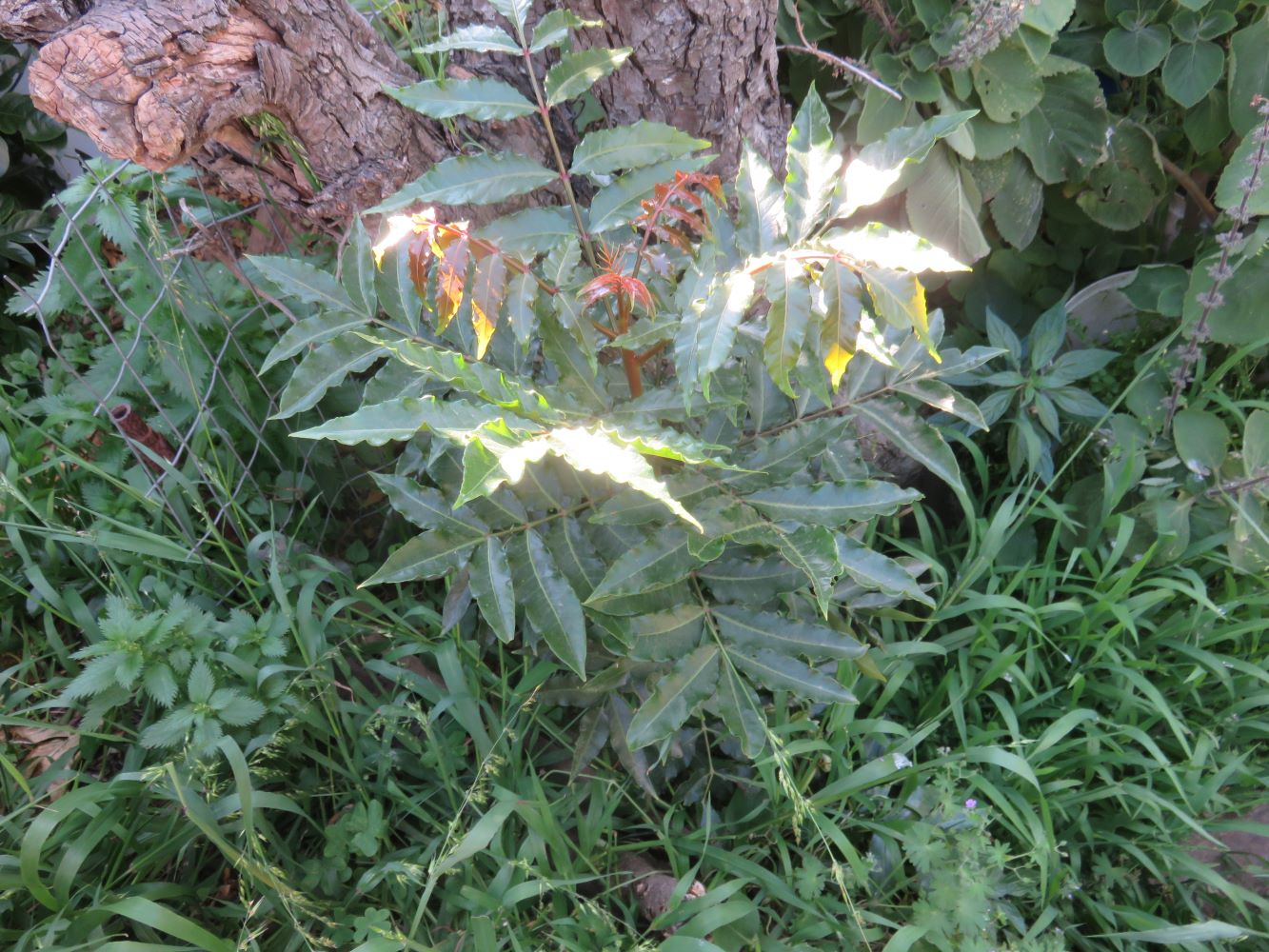 Home grown wild plum seedling. The berries have more anti-oxidants than blueberries.
Home grown wild plum seedling. The berries have more anti-oxidants than blueberries.I've transferred the detailed description of how I grow my trees to another page on how to grow trees from seed.
For me, all this transplanting and the consistent watering have been
the most work. But taken over a month its not a lot. Ten minutes a day,
with a good hour or two invested once a fortnight. The trouble is that a
week of neglect will wipe out all your work. With my scattered focus
when very busy, its been quite a problem. Being a soldier for urban
biodiversity needs some grit.
I've tried and had success with several local tree species like the wild plum and waterberry. Among the exotic trees, tamarillo, carob and oak were very easy to germinate. We have grown a lemon and an apple, but the germination rate is low. A few date palms, Podocarpus and other interesting things have sometimes emerged years later !
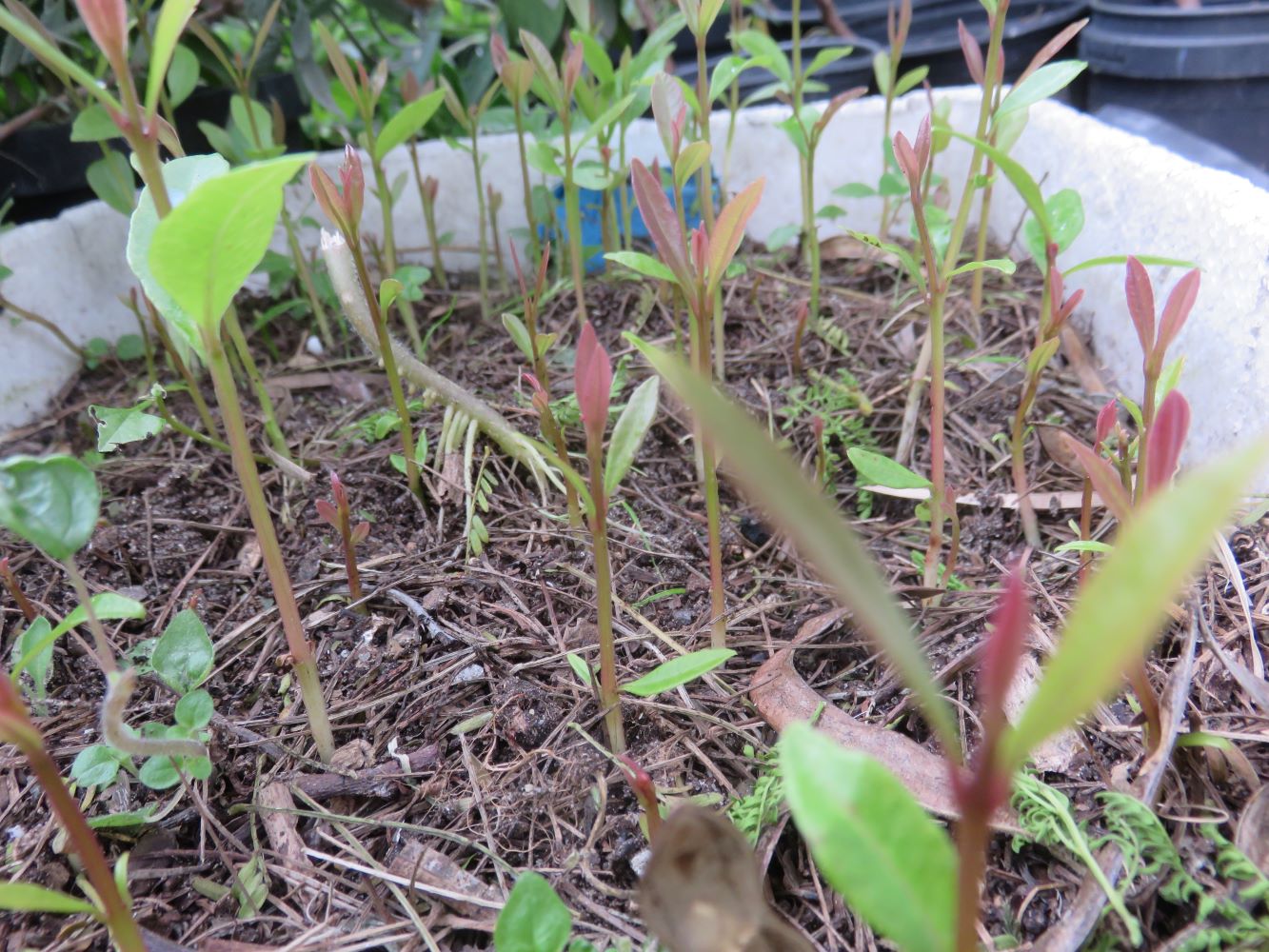 Native trees increase urban biodiversity: Euclea racemosa seedlings in a polystyrene fish tray.
Native trees increase urban biodiversity: Euclea racemosa seedlings in a polystyrene fish tray.If you are going to research, try several different really good writers. Otherwise go for the buckshot approach. Just try and carry on experimenting until your massed repeated efforts bring a breakthrough. Do not be discouraged at a 75% failure rate. Its the 25% success that counts, and does wonders.
Most of my seed was from street trees, and I'd prefer other sources, for reasons stated above. The tamarillo was gifted me by a permaculture friend. Swap seeds with your green networks. To broaden out my input to urban biodiversity I collect a little in the wild or in a local arboretum and started growing species like Euclea racemosa which you can see in the picture at the top of the page. I've never seen it in a nursery, garden or street before, but its so easy, a beautiful small tree ideal for small spaces, has edible fruit, is one of the backbone trees of our indigenous forests, and has a English and Khoekhoegowab name which promises it will grow in my deep sand, voila, the Dune Gwarrie !
You can read more about how to bring plant and animal especially butterfly diversity into your garden in Bring Nature back to your Garden by Charles and Julia
Botha, a book in our local libraries.
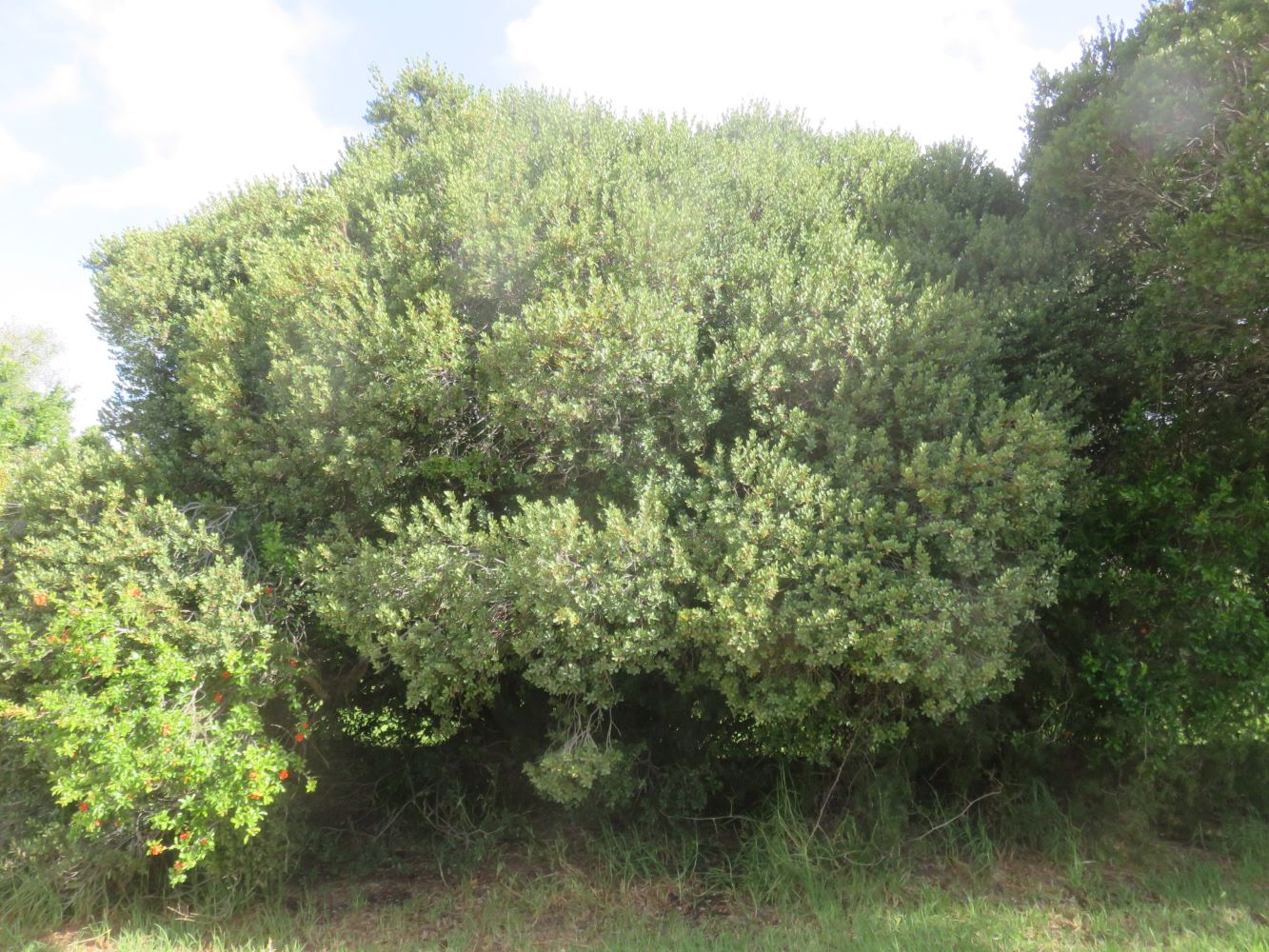 Euclea racemosa, about 3 meters high, small neat glossy foliage. Berries for birds and humans. Profuse flowers for insects.
Euclea racemosa, about 3 meters high, small neat glossy foliage. Berries for birds and humans. Profuse flowers for insects.------
home page for links to all my topics on regenerative and restorative gardening techniques
------
greenidiom's regenerative gardening blog
------
------
Your first paragraph ...
Restore Nature Newsletter
I've been writing for four years now and I would love to hear from you
Please let me know if you have any questions, comments or stories to share on gardening, permaculture, regenerative agriculture, food forests, natural gardening, do nothing gardening, observations about pests and diseases, foraging, dealing with and using weeds constructively, composting and going offgrid.
SEARCH
Order the Kindle E-book for the SPECIAL PRICE of only
Prices valid till 30.09.2023
Recent Articles
-
garden for life is a blog about saving the earth one garden at a time
Apr 18, 25 01:18 PM
The garden for life blog has short articles on gardening for biodiversity with native plants and regenerating soil for climate amelioration and nutritious food -
Cape Flats Sand Fynbos, Cape Town's most endangered native vegetation!
Apr 18, 25 10:36 AM
Cape Flats Sand Fynbos, a vegetation type found in the super diverse Cape Fynbos region is threatened by Cape Town's urban development and invasive alien plants -
Geography Research Task
Jan 31, 25 11:37 PM
To whom it may concern My name is Tanyaradzwa Madziwa and I am a matric student at Springfield Convent School. As part of our geography syllabus for this
"How to start a profitable worm business on a shoestring budget
Order a printed copy from "Amazon" at the SPECIAL PRICE of only
or a digital version from the "Kindle" store at the SPECIAL PRICE of only
Prices valid till 30.09.2023







